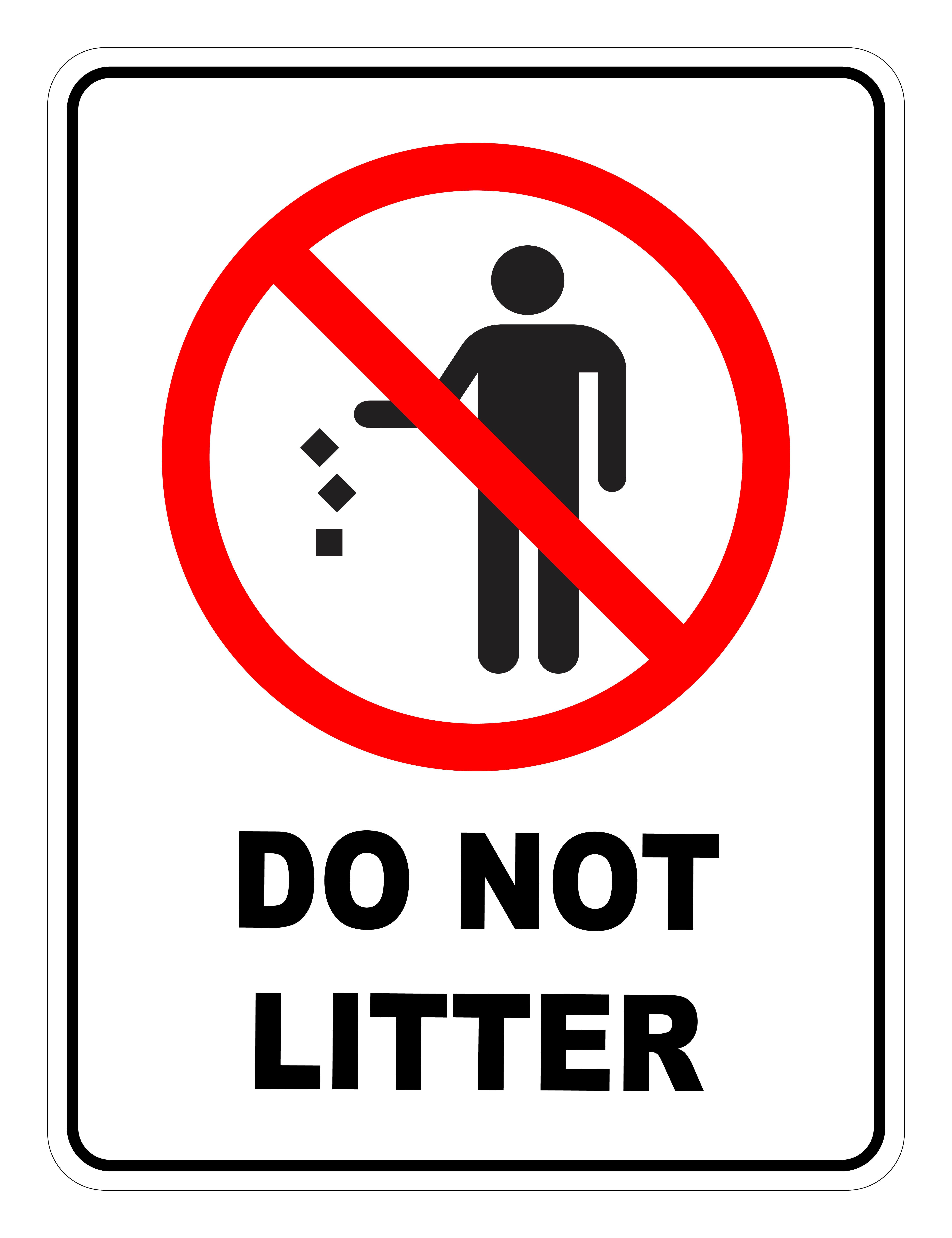Maintaining a clean and safe work environment is crucial for productivity, morale, and overall well-being. One critical aspect of this is ensuring that proper signage is in place to remind everyone of their responsibilities regarding waste disposal and environmental stewardship. The presence of clear and easily understood signage can significantly reduce instances of littering and encourage a culture of respect for shared spaces.
Do Not Litter Prohibited Safety Sign
 The “Do Not Litter Prohibited Safety Sign” is a visual reminder of the importance of proper waste management. This sign clearly communicates that littering is not permitted in the designated area, promoting a cleaner and more organized environment. The visual impact of such signage serves as a constant reminder to individuals to dispose of waste responsibly and avoid contributing to litter.
The “Do Not Litter Prohibited Safety Sign” is a visual reminder of the importance of proper waste management. This sign clearly communicates that littering is not permitted in the designated area, promoting a cleaner and more organized environment. The visual impact of such signage serves as a constant reminder to individuals to dispose of waste responsibly and avoid contributing to litter.
Effective waste management is not just about preventing litter; it also contributes to a safer workplace. Accumulated waste can pose several hazards, including slip and trip risks, fire hazards, and breeding grounds for pests. By preventing littering, we can minimize these risks and create a more secure environment for everyone. Moreover, a clean and organized workplace enhances productivity by reducing distractions and improving overall efficiency.
The placement of these signs should be strategic and well-considered. High-traffic areas, such as entrances, exits, break rooms, and outdoor spaces, are prime locations for “Do Not Litter Prohibited Safety Signs.” Ensure the signs are visible and easily readable from a distance. Regular maintenance is essential to keep the signs clean and free from damage, ensuring their continued effectiveness. Furthermore, it’s vital to complement signage with readily available waste receptacles. Placing bins in convenient locations encourages individuals to dispose of their waste properly, making it easier to adhere to the “Do Not Litter” policy.
Beyond the installation of signage and provision of waste receptacles, education plays a crucial role in promoting a culture of cleanliness. Conducting regular training sessions on proper waste disposal procedures can reinforce the importance of responsible waste management. These sessions can cover topics such as the environmental impact of littering, the benefits of recycling, and the correct use of different waste disposal containers. Involving employees in environmental initiatives, such as cleanup campaigns or recycling programs, can further foster a sense of ownership and responsibility for maintaining a clean and healthy environment. By combining visual reminders with education and active participation, we can create a workplace where everyone understands and embraces the importance of proper waste management.
Ultimately, preventing litter is a collective responsibility. It requires the active participation of everyone in the organization, from management to employees. By working together, we can create a cleaner, safer, and more productive environment for all. A well-maintained environment not only benefits our immediate surroundings but also reflects positively on the company’s image and commitment to sustainability.
If you are searching about Do Not Litter Prohibited Safety Sign you’ve came to the right page. We have 1 Pictures about Do Not Litter Prohibited Safety Sign like Do Not Litter Prohibited Safety Sign and also Do Not Litter Prohibited Safety Sign. Here you go:
Do Not Litter Prohibited Safety Sign
 www.safetycivil.com.auDo Not Litter Prohibited Safety Sign
www.safetycivil.com.auDo Not Litter Prohibited Safety Sign
do not litter prohibited safety sign. Do not litter prohibited safety sign